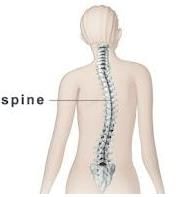Test: Postures - 1 - Humanities/Arts MCQ
20 Questions MCQ Test - Test: Postures - 1
Holding of a Javelin while running for a Javelin Throw, is which type of motor skill?
Exercise to develop motor skills like hopping, catching are prescribed in which stage?
The most appropriate way for increasing the participation of women in sports ______
Karan spent his weekend taking the health status of all the senior citizens above 70 in his residential apartment as part of a health survey. He found that more than half of them have shown a deformity in the upper part of the vertebral column. The term used to define this deformity is

ine motor development uses the _____ muscles for carrying out _____ activities.
_____ affecting motor development is also known as heredity factor.
Which one of the following activity related to fine motor development?
In which of the following age group, children starts to learn value of their societies?
Exercises to develop movement skills like jumping, hopping, throwing and catching is prescribed for child in
The second stage of motor development in a child is between the ages of _____ years and _____ years.
The inclusion of physical activities in life-style will lead to
In which kind of deformity, the gap between ankles goes on increasing and an individual faces difficulty during walking and running?
In which one of the following deformities, there is a wide gap between the knees?














